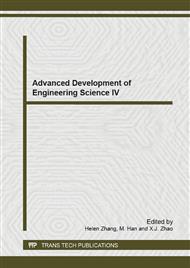p.22
p.26
p.30
p.34
p.39
p.43
p.50
p.54
p.58
Synthesized and Preparation of Side Chains Containing Nitrogen Atoms Sulfonated Polyimide Membranes
Abstract:
To improve the performance of sulfonated polyimide (SPI) membrane, especially to heighten water stability. A side chains containing nitrogen atoms sulfonated diamine monomer, 2,5-two (dimethyl amino methylene)-1,4-((paraamino) phenyl) benzene (DMAPB), was synthesized. A series of sulfonated polyimide (SPI) were prepared from DMAPB, 1,4,5,8-naphthalenetetracarboxylic dianhydride (NTDA) and sulfonated diamine (ODADS). The effects of side chains containing nitrogen atoms on SPI membrane are investigated. The basic nitorgen atom introduced in the side chains could effectively resist membrane swelling due to the strong interchain interactions through basic nitorgen atom and sulfonic acid groups. The copolymer SPI 40 showed higher water stability, it could maintain mechanical strength after being soaked in 100 °C liquid water for more than 1000 h.
Info:
Periodical:
Pages:
39-42
Citation:
Online since:
October 2014
Authors:
Keywords:
Price:
Сopyright:
© 2014 Trans Tech Publications Ltd. All Rights Reserved
Share:
Citation:


